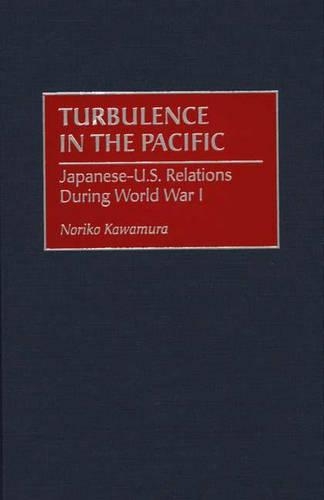
Turbulence in the Pacific: Japanese-U.S. Relations During World War I
(Hardback)
Publishing Details
Turbulence in the Pacific: Japanese-U.S. Relations During World War I
By (Author) Noriko Kawamura
Bloomsbury Publishing PLC
Praeger Publishers Inc
30th June 2000
United States
Classifications
Tertiary Education
Non Fiction
European history
First World War
Asian history
Warfare and defence
History: specific events and topics
940.415
Physical Properties
Hardback
192
Description
Although events in East Asia were a sideshow in the great drama of World War I, what happened there shattered the accord between Japan and the United States. This book pursues the two-fold question of how and why U.S.-Japanese tensions developed into antagonism during the war by inquiring into the historical sources of both sides. Kawamura explains this complex phenomenon by looking at various factors: conflicts of national interestsgeopolitical and economic; perceptual problems such as miscommunication, miscalculation, and mistrust; and, most important of all, incompatible approaches to foreign policy. America's universalism and the unilateralism inherent in Wilsonian idealistic internationalism clashed with Japan's particularistic regionalism and the pluralism that derived from its strong sense of racial identity and anti-Western nationalistic sentiments. By looking at the motives and circumstances behind Japan's expansionist policy in East Asia, Kawamura suggests some of the centrifugal forces that divided the nations and challenged the premise of Wilsonian internationalism. At the same time, through critical examination of the Wilson administration's universalist and unilateral response to Japan's actions, she raises serious questions about the effectiveness of American foreign policy. At the close of the 20th century, after 50 years of Cold War, those in search of a new world order tend to resort to Wilsonian rhetoric. This book suggests that it can be unwise to apply a universalistic and idealistic approach to international conflicts that often result from extreme nationalism, regionalism, and racial rivalry.
Reviews
[n]o recent English-language monograph has solely addressed the wartime diplomacy between the teo nations.... Turbulence in the Pacific is a marvelously well-researched and compelling argued book that demonstrates the intricacies of intercultural diplomacy.-Army History
Noriko Kawamura has written the best book we have on Woodrow Wilson''s confrontation with Japan during World War I and in the peace conference that followed.-The Journal of Military History
The author sheds new light on important dimensions of some of the easly phases of the long process of mutual estrangement that led eventually to Pearl Harbor.-Choice
"no recent English-language monograph has solely addressed the wartime diplomacy between the teo nations.... Turbulence in the Pacific is a marvelously well-researched and compelling argued book that demonstrates the intricacies of intercultural diplomacy."-Army History
"Noriko Kawamura has written the best book we have on Woodrow Wilson''s confrontation with Japan during World War I and in the peace conference that followed."-The Journal of Military History
"The author sheds new light on important dimensions of some of the easly phases of the long process of mutual estrangement that led eventually to Pearl Harbor."-Choice
"[n]o recent English-language monograph has solely addressed the wartime diplomacy between the teo nations.... Turbulence in the Pacific is a marvelously well-researched and compelling argued book that demonstrates the intricacies of intercultural diplomacy."-Army History
Author Bio
NORIKO KAWAMURA is Associate Professor of History at Washington State University./e Educated in Japan and in the U.S., her previous teaching assignments include the Virginia Military Institute. Her present research interests focus upon Emperor Hirohito and the Pacific War.
